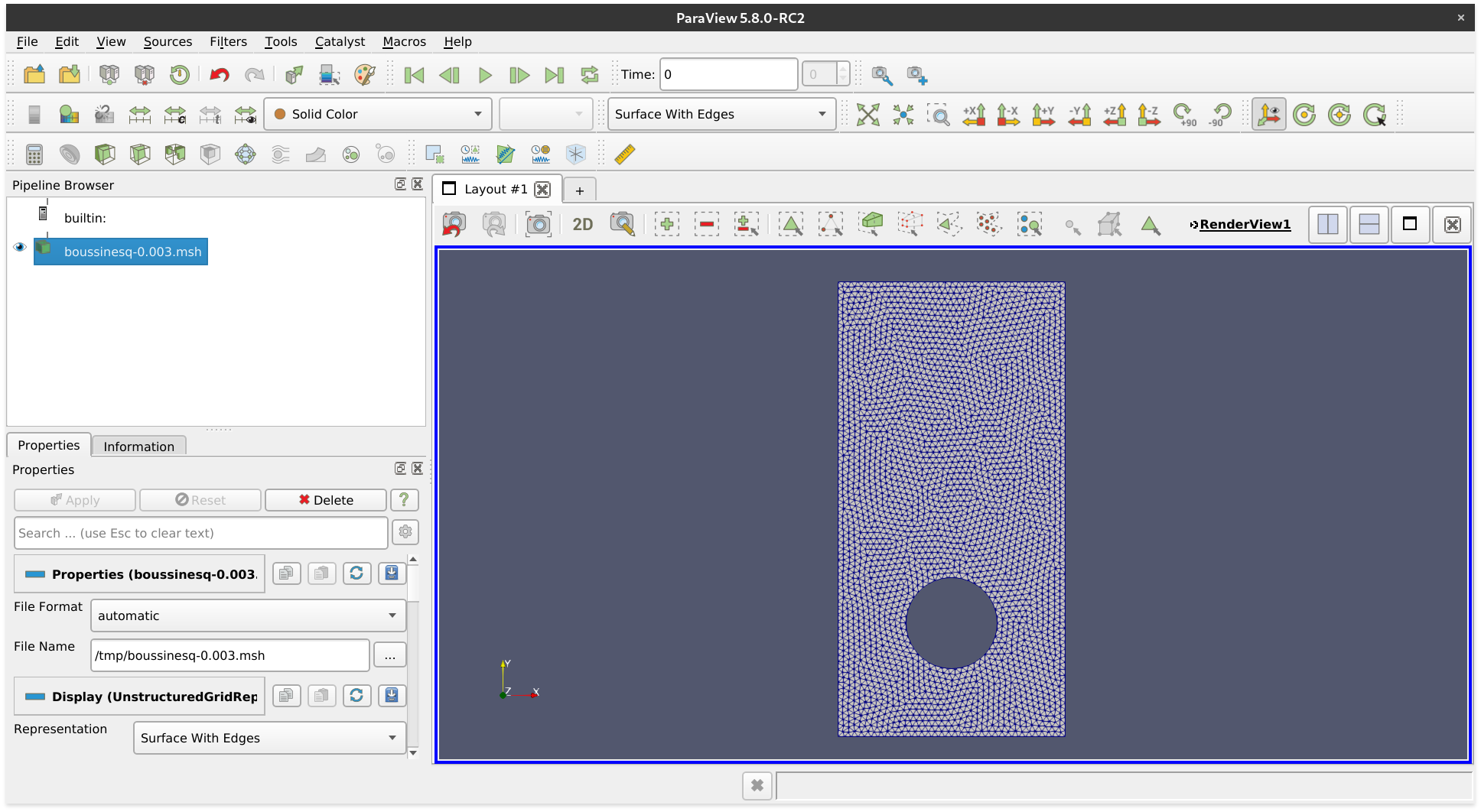
Product
Socket Now Supports pylock.toml Files
Socket now supports pylock.toml, enabling secure, reproducible Python builds with advanced scanning and full alignment with PEP 751's new standard.
I/O for mesh files.
There are various mesh formats available for representing unstructured meshes. meshio can read and write all of the following and smoothly converts between them:
Abaqus (
.inp), ANSYS msh (.msh), AVS-UCD (.avs), CGNS (.cgns), DOLFIN XML (.xml), Exodus (.e,.exo), FLAC3D (.f3grid), H5M (.h5m), Kratos/MDPA (.mdpa), Medit (.mesh,.meshb), MED/Salome (.med), Nastran (bulk data,.bdf,.fem,.nas), Netgen (.vol,.vol.gz), Neuroglancer precomputed format, Gmsh (format versions 2.2, 4.0, and 4.1,.msh), OBJ (.obj), OFF (.off), PERMAS (.post,.post.gz,.dato,.dato.gz), PLY (.ply), STL (.stl), Tecplot .dat, TetGen .node/.ele, SVG (2D output only) (.svg), SU2 (.su2), UGRID (.ugrid), VTK (.vtk), VTU (.vtu), WKT (TIN) (.wkt), XDMF (.xdmf,.xmf).
(Here's a little survey on which formats are actually used.)
Install with one of
pip install meshio[all]
conda install -c conda-forge meshio
([all] pulls in all optional dependencies. By default, meshio only uses numpy.)
You can then use the command-line tool
meshio convert input.msh output.vtk # convert between two formats
meshio info input.xdmf # show some info about the mesh
meshio compress input.vtu # compress the mesh file
meshio decompress input.vtu # decompress the mesh file
meshio binary input.msh # convert to binary format
meshio ascii input.msh # convert to ASCII format
with any of the supported formats.
In Python, simply do
import meshio
mesh = meshio.read(
filename, # string, os.PathLike, or a buffer/open file
# file_format="stl", # optional if filename is a path; inferred from extension
# see meshio-convert -h for all possible formats
)
# mesh.points, mesh.cells, mesh.cells_dict, ...
# mesh.vtk.read() is also possible
to read a mesh. To write, do
import meshio
# two triangles and one quad
points = [
[0.0, 0.0],
[1.0, 0.0],
[0.0, 1.0],
[1.0, 1.0],
[2.0, 0.0],
[2.0, 1.0],
]
cells = [
("triangle", [[0, 1, 2], [1, 3, 2]]),
("quad", [[1, 4, 5, 3]]),
]
mesh = meshio.Mesh(
points,
cells,
# Optionally provide extra data on points, cells, etc.
point_data={"T": [0.3, -1.2, 0.5, 0.7, 0.0, -3.0]},
# Each item in cell data must match the cells array
cell_data={"a": [[0.1, 0.2], [0.4]]},
)
mesh.write(
"foo.vtk", # str, os.PathLike, or buffer/open file
# file_format="vtk", # optional if first argument is a path; inferred from extension
)
# Alternative with the same options
meshio.write_points_cells("foo.vtk", points, cells)
For both input and output, you can optionally specify the exact file_format
(in case you would like to enforce ASCII over binary VTK, for example).
The XDMF format supports time series with a shared mesh. You can write times series data using meshio with
with meshio.xdmf.TimeSeriesWriter(filename) as writer:
writer.write_points_cells(points, cells)
for t in [0.0, 0.1, 0.21]:
writer.write_data(t, point_data={"phi": data})
and read it with
with meshio.xdmf.TimeSeriesReader(filename) as reader:
points, cells = reader.read_points_cells()
for k in range(reader.num_steps):
t, point_data, cell_data = reader.read_data(k)
 *A Gmsh file opened with ParaView.*
*A Gmsh file opened with ParaView.*
If you have downloaded a binary version of ParaView, you may proceed as follows.
pvpython --version)paraview-meshio-plugin.py of your meshio installation (on Linux:
~/.local/share/paraview-5.9/plugins/) and load it under Tools / Manage Plugins / Load NewYou can now open all meshio-supported files in ParaView.
The comparisons here are for a triangular mesh with about 900k points and 1.8M triangles. The red lines mark the size of the mesh in memory.
meshio is available from the Python Package Index, so simply run
pip install meshio
to install.
Additional dependencies (netcdf4, h5py) are required for some of the output formats
and can be pulled in by
pip install meshio[all]
You can also install meshio from Anaconda:
conda install -c conda-forge meshio
To run the meshio unit tests, check out this repository and type
tox
meshio is published under the MIT license.
FAQs
I/O for many mesh formats
We found that meshio demonstrated a healthy version release cadence and project activity because the last version was released less than a year ago. It has 1 open source maintainer collaborating on the project.
Did you know?

Socket for GitHub automatically highlights issues in each pull request and monitors the health of all your open source dependencies. Discover the contents of your packages and block harmful activity before you install or update your dependencies.

Product
Socket now supports pylock.toml, enabling secure, reproducible Python builds with advanced scanning and full alignment with PEP 751's new standard.

Security News
Research
Socket uncovered two npm packages that register hidden HTTP endpoints to delete all files on command.

Research
Security News
Malicious Ruby gems typosquat Fastlane plugins to steal Telegram bot tokens, messages, and files, exploiting demand after Vietnam’s Telegram ban.